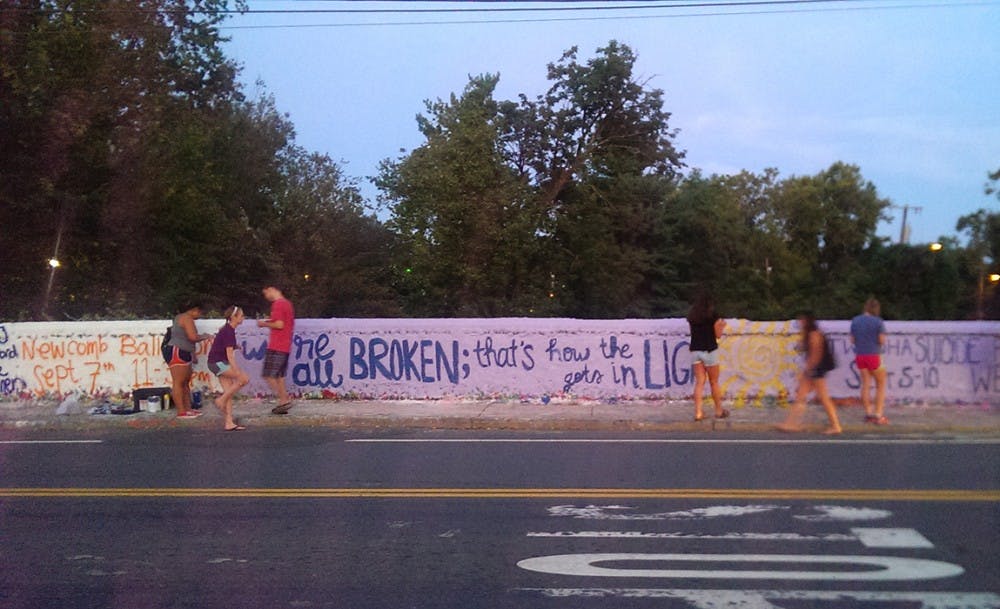Last week, To Write Love on Her Arms hosted a week of events in honor of National Suicide Prevention Week. The week featured painting Beta Bridge, speakers and state Sen. Creigh Deeds (D-Bath) discussing his work on mental health treatment.
To get the week started, club members painted an inspirational message on Beta Bridge, “We’re all broken; that’s how the light gets in.”
“We painted Beta Bridge as a club to bond and also spread the message of hope to the rest of the U.Va. community,” club president Megan Mason Dister, a third-year in the College, said in an email statement.
Tuesday’s scheduled speaker was suddenly unable to attend, but would have presented on the link between suicide and intimate partner violence.
Richard Merkel, associate professor of psychiatry and neurobehavioral sciences, gave a presentation Wednesday called “Why We Have Not Yet Prevented Suicide.” Merkel, who also teaches an anthropology class at the University, explained the ethnomedical model, which examines how different cultures may or may not view the same issue as a medical problem.
He discussed the different rates and perspectives of suicide from around the world, and what they can add to the conversation about suicide in the West.
“This ties in with high rates for women in China and India, because they’re in incredible distress,” Merkel said. “They are disenfranchised, they are forced into marriages, they deal with all sorts of difficult things. They clearly are having distress, but you can’t diagnose them with our concept of depression.”
Merkel also discussed the social-culture model, which looks at the meanings behind behaviors. Throughout the world, whether or not suicide is considered an acceptable behavior, people who go through with it often follow a similar set of scripted behaviors, which can be seen as conveying a message. Messages can be sent directly — by leaving a note or conveying suicidal thoughts — or indirectly — through one’s behavior or verbal cues.
“So if we start thinking about this not as a pathological behavior per se, but as a behavior that’s trying to communicate some distress in some way, and there’s degrees of communication, from ‘help me’ to ‘I’m really suffering, suffering, I don’t want anyone to help me,’ and that’s a spectrum,” Merkel said.
Deeds spoke Thursday, about the subcommittee he chairs — the Joint Subcommittee to Study Mental Health Services in the Twenty-First Century — which is tasked with studying mental health treatment in Virginia and proposing legislation.
“More and more people die by suicide, and I genuinely don’t believe it’s all related to mental illness,” Deeds said.
Deeds — whose son, Gus, attacked him before committing suicide — said that he believes people have a responsibility to speak up if they see someone in distress.
“If you’ve got a friend who’s in trouble, you can’t worry about that friend getting mad at you because you got help,” Deeds said.
To finish off the week, Leslie Hubbard of the Contemplative Science Center led a yoga and mindfulness workshop Friday. The organizers hoped the event would help students learn new ways to manage stress and anxiety.
Saturday was World Suicide Prevention Day, and TWLOHA urged people to wear orange in support of all those struggling with mental illness.
“We tried to come up with a variety of events to look at suicide prevention in different lights and to present resources and coping mechanisms,” Dister said. “We wanted people to think critically about this issue and also to know that hope and help exists for those who are struggling.”







